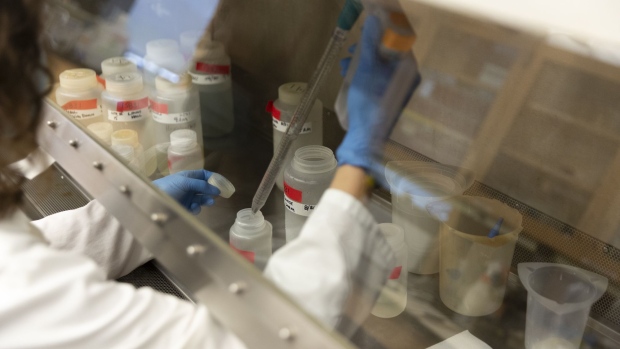Jan 20, 2022
Omicron’s Spread Through U.S. Cities Is Shown in Wastewater Study
, Bloomberg News

(Bloomberg) -- Signs of the omicron variant that’s fueling a worldwide surge in Covid-19 cases were present in the U.S. a week or more before it first appeared in California, and spread widely in the weeks afterwards, according to a study showing the power of wastewater analysis for tracking outbreaks.
Evidence of omicron appeared in U.S. sewage samples collected as early as Nov. 21, state and local health officials from California, Colorado, Houston and New York City said in a study published by the U.S. Centers for Disease Control and Prevention. The first infection in a U.S. patient was confirmed on Dec. 1 in California.
“The findings give strong early evidence that the omicron variant was likely present or more widely distributed in these communities than originally indicated by clinical testing alone,” the authors said in CDC’s Morbidity and Mortality Weekly Report. The four health authorities were the first to find signs of the variant in their wastewater, according to the study.
New variants like omicron, first seen in South Africa and Botswana, pose a risk because their genetic changes may increase their contagiousness or virulence. They may also be less recognizable to the human immune system, raising the possibility of reinfections or breakthrough cases in vaccinated people. Analyzing wastewater containing human feces can be an important way to look for warning signs of new mutations, as well as track those already spreading to determine how long existing surges will last.
SARS-CoV-2 infects a wide variety of human tissues along with the lungs, including the gut, and is frequently excreted by infected people. Dutch researchers reported in March 2020 that they were able to find genetic material from the virus in wastewater before Covid-19 cases were reported in the population.
The technique “gives you a heads-up because people may not want to pick up the phone for surveys, but everybody poops,” said Gigi Gronvall, an immunologist at the John Hopkins Center for Health Security. “And it’s so unbiased because everybody uses the same sewer system.”
Houston; New York
Variants occur as the virus’s genome evolves, sometimes giving rise to new versions with features that make them able to spread faster or infect cells more efficiently. Researchers can look for these mutations in pieces of the viral genome that persist in sewage.
About two days before Houston’s first omicron case was detected, the city’s health department collected wastewater containing six coronavirus mutations that turned out to be associated with the variant. That was followed over the next two weeks by increasing detection of mutations related to omicron, the report said.
In New York City, the warnings of omicron came even earlier. The city’s Department of Environmental Protection found omicron-associated mutations in a sewage samples collected about 10 days before the first case of the variant was seen in the community.
Separately, New York Governor Kathy Hochul proposed spending $5 million annually from 2023 through 2025 to expand the state’s wastewater surveillance program for coronavirus markers.
The CDC funds 43 health departments for the National Wastewater Surveillance System that provides data on Covid’s presence and trends in water systems.
©2022 Bloomberg L.P.